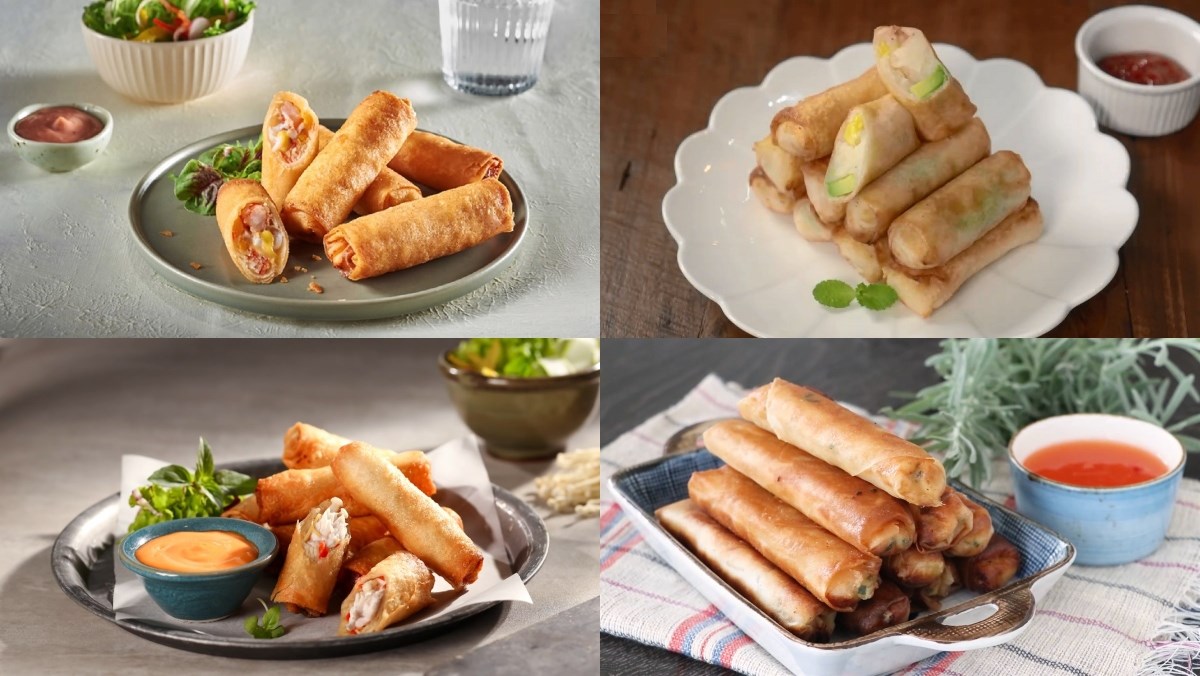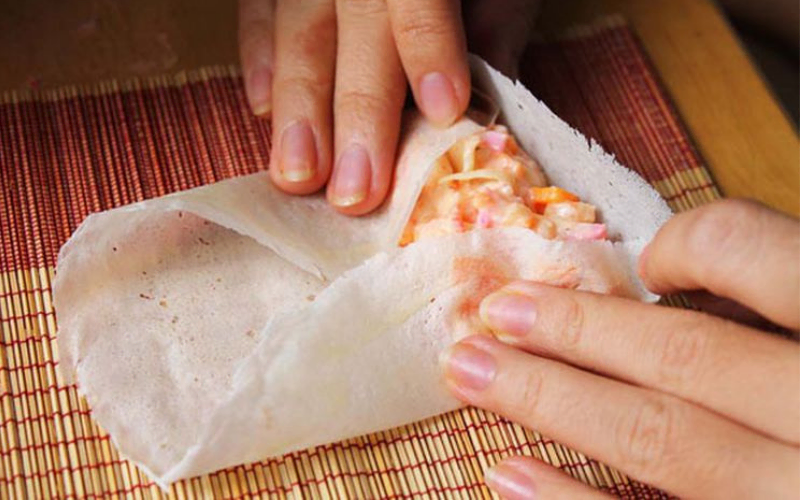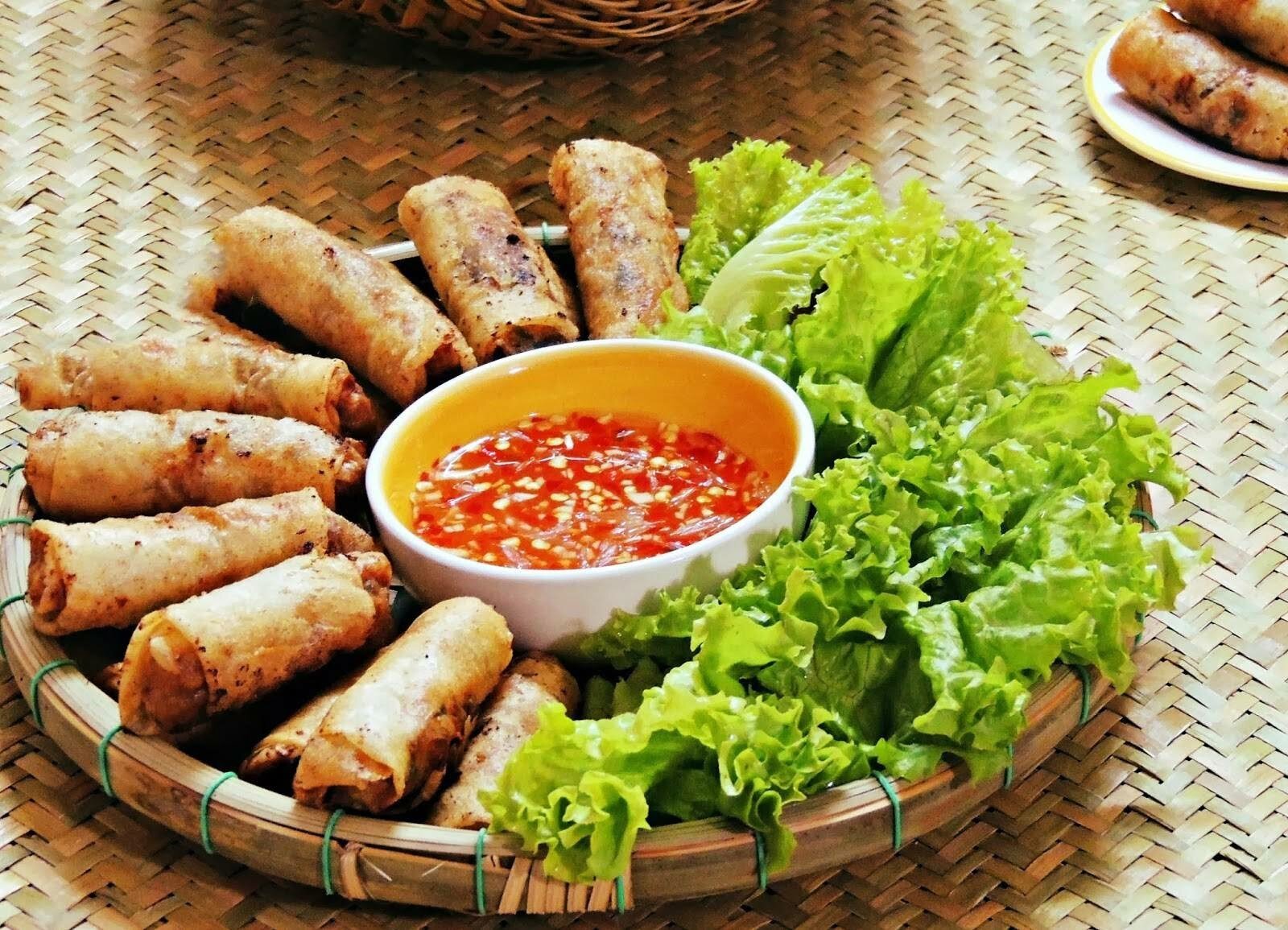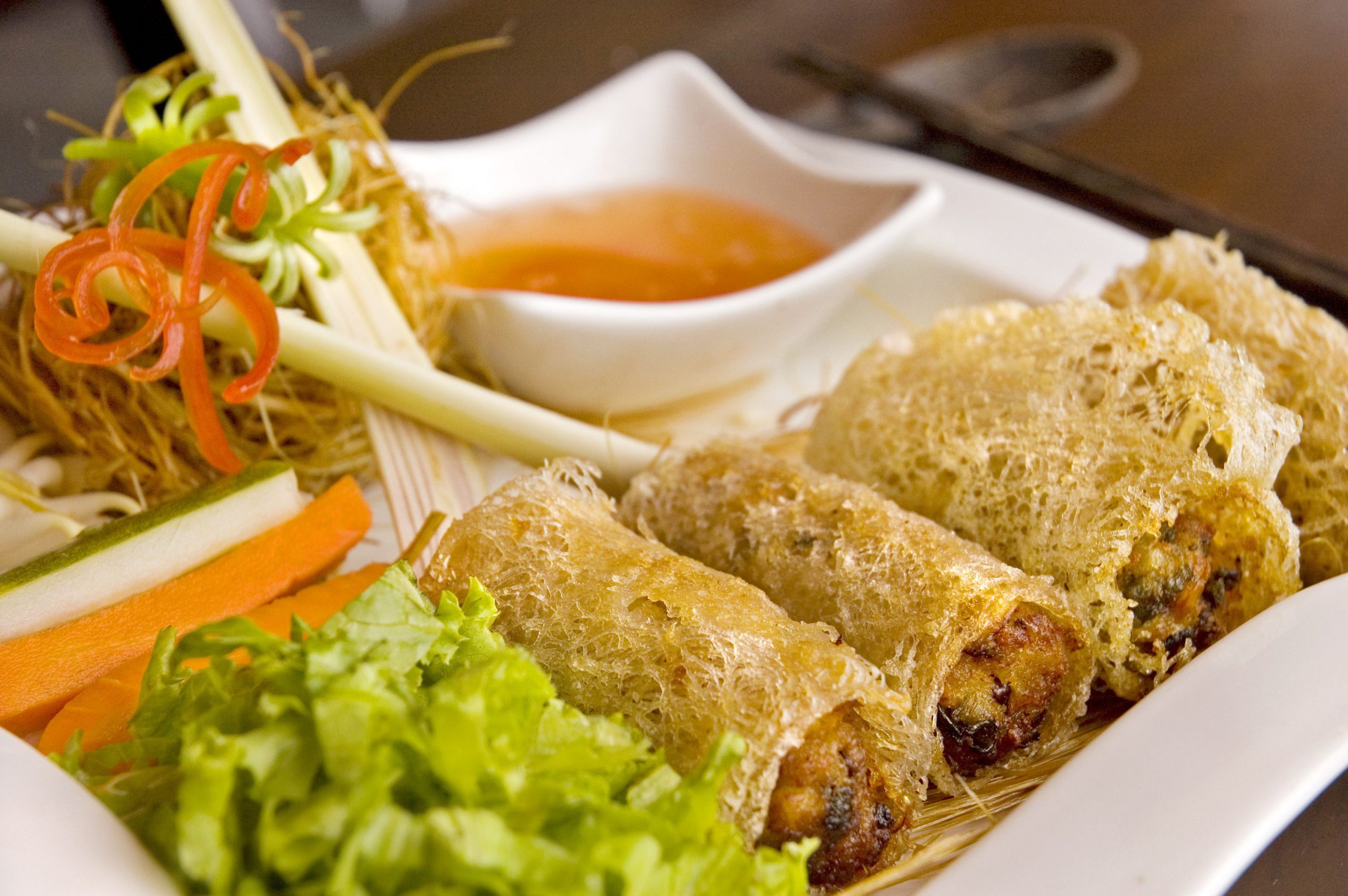Vietnamese egg rolls (cha gio) will make you drool with their bold flavors and the satisfying crispiness of their texture. Don’t miss the chance to taste this flavourful dish in Vietnam.

During your Vietnam travel journey, in addition to exploring renowned tourist attractions, you should make sure to savor Vietnamese egg rolls to appreciate the harmonious blend of flavors and textures that Vietnamese cuisine offers. From the Northern, Central to Southern variations of Vietnamese rolls, you will encounter distinct twists on this beloved dish. Read on to discover several types of cha gio and how to make Vietnamese egg rolls.
1. Ingredients for Vietnamese egg rolls (cha gio)

Vietnamese food has earned a global reputation for its delicious dishes, and one standout favorite is cha gio. These crispy Vietnamese egg rolls, also known as fried Vietnamese spring rolls, are a delicious appetizer enjoyed for their perfect mix of flavors and textures. Typically made with ground pork, you can also opt for seafood as a tasty alternative. The key ingredients include ground pork, along with veggies like carrots, ginger, garlic, green onions, and finely chopped wood ear mushrooms.
Vietnamese people also add in some green beans, fish sauce, oyster sauce, sesame oil, black pepper, and salt for flavoring. These ingredients are carefully mixed and wrapped in see-through rice paper, which has a delightful taste and crispy texture when fried. The result is a fantastic dish loved by people worldwide, showcasing the perfect mix of flavors and textures that make Vietnamese egg rolls a favorite.
2. Differences between Vietnamese egg rolls in the three regions
2.1. Vietnamese egg rolls in the North

Northern Vietnamese food often features distinctive flavors and ingredients. Vietnamese egg rolls, known as “nem ran” in the North, are no exception. The unique feature of this variation of Vietnamese egg rolls is the kind of rice paper used, which has more rice powder, making it less see-through and thicker. What really sets nem ran apart is its generous use of scallions and glass vermicelli made from arrowroot leaves.
Now, there is a special variation known as “nem cua be Hai Phong” from the coastal city of Hai Phong. These are different in shape, which resemble squared pillows. What makes them stand out is the crab meat. Hai Phong is famous for fresh seafood, and these crab-filled egg rolls are a real treat for seafood lovers.
When it comes to enjoying them, it is pretty straightforward. You can have nem ran alongside “bun cha Hanoi”, which is famous for its grilled pork patties. Or you can just dip them in a bowl of Vietnamese egg rolls’ dipping sauce, including fish sauce mixed with minced garlic and carrots, keeping things simple and delicious.
2.2. Vietnamese egg rolls in the Central

In Central Vietnam, Vietnamese egg rolls are often called “ram bap”. These rolls are about the size of a finger. They are smaller than the egg rolls in the North, which makes them extra crispy and perfect for a one-bite snack. Unlike the more complex fillings in the Northern variation, ram bap keeps it simple with minced pork, corn, and fresh chives as the main ingredients.
The ingredients of Vietnamese egg rolls in this region reflect the culinary traditions and the practicality of Central Vietnamese food. The region’s climate, with hot seasons and heavy rains, has influenced food choices, favoring sturdy staples like corn and jicama. Central Vietnamese dishes tend to be spicier and saltier, and they are served in smaller portions to conserve food for rainy days.
Ram bap is a wrap-and-roll dish served with rectangular rice paper sheets, fresh vegetables, and a zesty fish sauce. To enjoy these Vietnamese egg rolls, you can roll them up with fresh veggies and dip the bundle into the fish sauce. It is not just a tasty treat; it is also a taste of Central Vietnam’s unique culture.
2.3. Vietnamese egg rolls in the South

In Southern Vietnam, the local people often call Vietnamese egg rolls “cha gio”. These rolls are a bit wider, about two fingers wide and 8-10 cm long. When they are served, they are often sliced into 2-3 bite-sized pieces for easy munching. Regarding the ingredients, some must-haves for the classic cha gio are minced pork, shrimp, wood-ear mushrooms, taro, and carrots. These simple ingredients are carefully balanced to create a signature taste.
The Southern people add their unique touch to Vietnamese egg rolls by using “bo bia” rice paper, which is made from a blend of wheat flour and green bean powder. This rice paper gives the rolls a flexible crust and a satisfying crunch when they are fried. Another popular twist in the South is net rice paper. These thin rice paper sheets have a net-like pattern that helps drain excess oil, keeping the rolls less greasy and crispier.
In southern cities, you can enjoy cha gio in different ways. During special occasions like weddings or ceremonies, it serves as an appetizer. You will find cha gio on a big plate with other Vietnamese cold cuts, and people like to dip them in a spicy and sweet chili sauce. When it is an everyday meal, cha gio is served on a bed of rice noodles, along with chopped veggies, roasted peanuts, pickled carrots, and a fish sauce dressing.
3. How to make Vietnamese egg rolls?
If you want to create Vietnamese egg rolls in the comfort of your own kitchen, you can follow these steps.
3.1. Make the filling of cha gio
(2).jpg)
The first step in crafting delicious Vietnamese egg rolls is to prepare the flavorful filling. In a big bowl, you need to combine ground pork, shrimp, wood ear mushrooms, cellophane noodles, onions, and jicama. Next, separate the egg yolks from the egg whites, keeping the whites aside in a small bowl. Now, it is time to add some flavor – toss in garlic, salt, pepper, granulated sugar, sesame oil, and fish sauce. Then, give everything a good mix either with your hands or a big spoon.
To ensure the seasoning of Vietnamese egg roll filling is just right, take a tiny bit of the filling and sear it on the stove. Once cooked, have a taste to gauge its flavor profile. If it seems a bit bland, don’t hesitate to add more salt. This meticulous attention will set the stage for a delectable homemade cha gio.
3.2. Wrap the filling in rice paper

Now that you have got your delectable filling ready, it is time to roll up your Vietnamese rice paper rolls. Here is how to do it:
- Begin by taking one egg roll wrapper and laying it flat on a plate before folding the bottom corner up, covering about 2/3 of the wrapper.
- Put around 3 tablespoons of your filling at the bottom of the wrapper. Make sure it is evenly spread out.
- Fold the left and right edges tightly over the filling, like you are making an open envelope.
- Grab the bottom of the egg roll and start rolling it up tightly. When you reach the end of the wrapper, dip your finger into the egg whites you set aside earlier and moisten the top corner of the wrapper. This will seal your egg roll.
- Finish rolling it, making sure it is sealed securely. Repeat these steps until you have used up all your egg roll wrappers or filling.
3.3. Fry Vietnamese egg rolls

Frying Vietnamese egg rolls is the last step in this delightful culinary journey. Traditionally, Vietnamese cooks prefer using a hot pan filled with oil, often perched on a charcoal stove or a gas/electric stove. Carefully place your egg rolls into the hot oil and let them fry until they turn a lovely golden color, which means they are perfectly crispy on the outside. Take them out of the hot oil and let them drain any excess oil. For the ultimate crispiness, you should give them another quick fry for a few minutes right before serving. This double-fry technique makes sure your egg rolls are super crispy to enjoy.
4. How to eat Vietnamese egg rolls?

Eating Vietnamese egg rolls is a delightful experience with a few tasty options:
- Enjoyed as a classic appetizer: These crispy rolls are a popular appetizer all over Vietnam. They are often served with a flavorful Vietnamese dipping sauce. To enhance the taste, you can wrap them in fresh lettuce leaves along with basil, coriander, and mint. They bring a combination of flavors that is both satisfying and refreshing.
- Enjoyed along noodle salad: For a unique twist, you can enjoy fried spring rolls with Vietnamese noodle salad. Start by cutting the spring rolls into bite-sized pieces. Then, mix them with vermicelli, bean sprouts, and an array of chopped vegetables, including cucumbers, carrots, and pickled cabbage. This unconventional approach blends the crispiness of the egg rolls with the freshness of the salad.
However you choose to enjoy them, Vietnamese egg rolls make for a tasty snack that can easily become a favorite at your dining table. Whether as a classic appetizer or part of a salad dish, these fried spring rolls are sure to satisfy your cravings.

